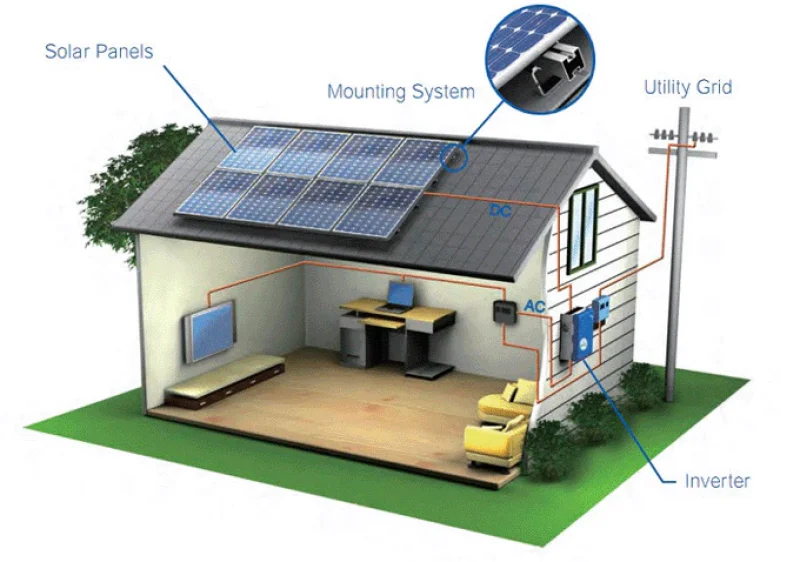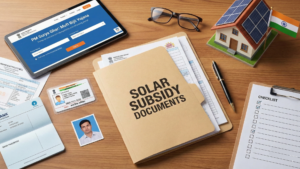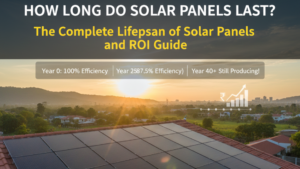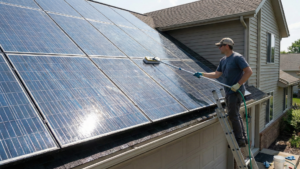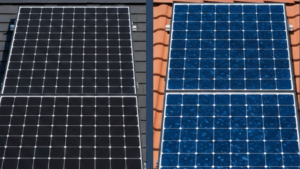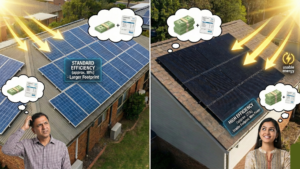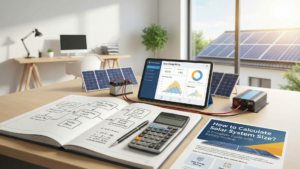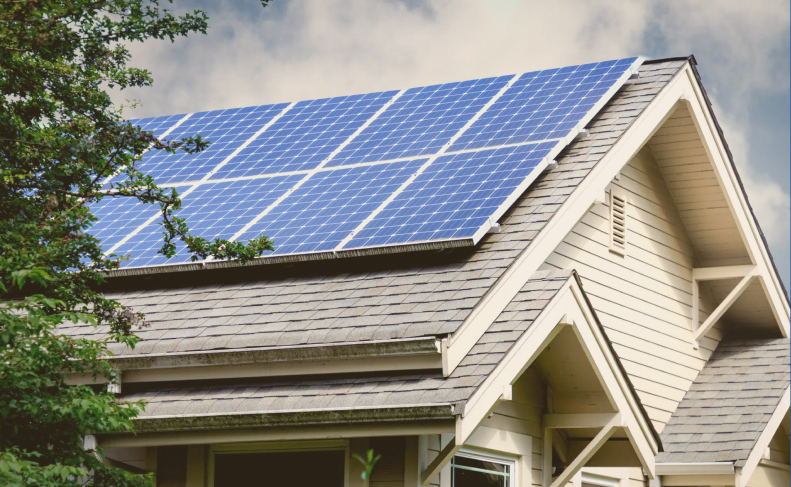A lot of equipment, including solar panels, solar racking, and a solar inverter, make up the solar panel system.
What is a solar power system?
A solar power system, also known as a photovoltaic (PV) system, is a setup that converts sunlight into usable electricity for your home or business.
Residential solar power system installations result in a clean, renewable energy source that requires minimal maintenance with savings that could pay back the initial investment in just a few years!
There are 3 main types of home solar systems:-
Grid-tied solar system: A grid-tied system is the most common type of solar system. It has no solar battery for backup power and utilizes net metering to maximize savings
Hybrid: In hybrid solar systems, rooftop solar panels are connected to both a solar battery and the electric grid
Off-grid: An off-grid solar system operates independently of the utility grid, making it ideal for remote locations where grid connection isn’t available or unreliable.
Components of a solar panel installation?
Solar Panels
Solar panels capture the sun’s rays with photovoltaic cells. These cells convert sunlight directly into clean, renewable electricity. Mounted on rooftops or in solar farms, they reduce dependence on fossil fuels. While the upfront cost can be high, solar panels can significantly lower electricity bills and even increase your home’s value.
Solar inverter
A solar inverter is the unsung hero of your solar system. It takes the variable DC electricity produced by solar panels and transforms it into usable AC electricity that powers your home’s appliances, seamlessly integrating solar energy into your existing electrical grid.
The 3 main types of solar inverters, based on how they handle the electricity from the solar panels, are:
- String inverters: These are the most common and affordable option. They connect multiple solar panels in series (“string”) and convert the combined DC output from the entire string into AC electricity.
- Microinverters: Each solar panel has its dedicated microinverter attached. This allows for maximum power production from each panel, even if one panel is shaded or malfunctioning. However, microinverters are generally more expensive than string inverters.
- Power optimizers: These act as a middle ground between string inverters and microinverters. Optimizers are placed under each panel and improve efficiency by managing the power output from each panel before sending it to a central string inverter.
Solar racking
Solar racking, also sometimes called solar mounting systems, are the essential structures that securely hold solar panels in place
Net meter
A net meter is a key component of solar systems that are connected to the grid.
A net meter is a device installed alongside solar panel systems that measures the flow of electricity in two directions:
- From the grid to your home: This indicates the electricity you consume from the utility company.
- From your solar panels to the grid: This shows the excess electricity your solar panels generate that gets fed back into the grid.
Solar performance monitoring
This is the practice of tracking and analyzing the efficiency and output of your solar panel system
Solar battery storage
This is an increasingly popular technology that allows you to store excess electricity generated by your solar panels for later use.
Hybrid solar systems and off-grid systems both use solar energy storage. However, off-grid systems require more batteries because they don’t have the grid to fall back on like hybrid systems do.
Charge controller
Charge controllers are installed between the solar panels and the battery to prevent the batteries from being overcharged and to ensure that the battery is charged at the right voltage level.
